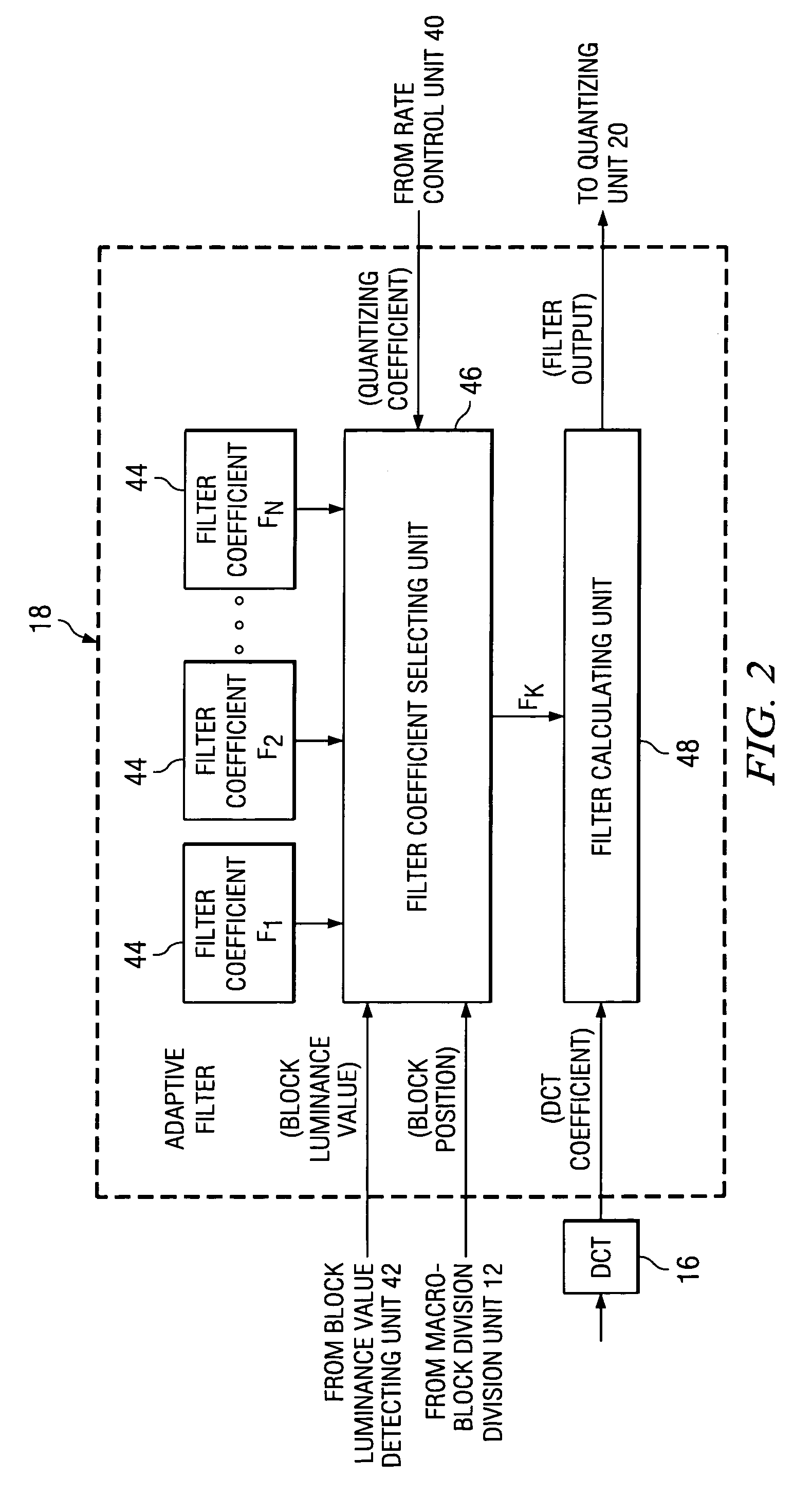Image information compression device
a compression device and image information technology, applied in the field of encoded and compressed image information, can solve the problems of insufficient quantity of code allotted to the later frame, so-called frame omission, and large quantity of information is instantly generated, so as to minimize the degradation of image quality, improve image quality, and be easily visible
- Summary
- Abstract
- Description
- Claims
- Application Information
AI Technical Summary
Benefits of technology
Problems solved by technology
Method used
Image
Examples
Embodiment Construction
[0029]In the following, preferred embodiments of this invention will be explained with reference to appended Figures. These Figures illustrate: frame memory 10; macro-block division unit 12; difference calculation unit 14; DCT transform unit 16; adaptive filter 18; quantizing unit 20; variable length encoding unit 22; local decoding unit 24; motion detection unit 26; motion compensation unit 28; inverse quantizing unit 30; inverse DCT transform unit 32; adder 34; frame memory 36; rate control unit 40; block luminance value detection unit 42; coefficient table memory 44; filter coefficient selecting unit 46; and filter calculating unit 48.
[0030]FIG. 1 illustrates the image information compression device in one embodiment of this invention. This image information compression device is an encoder that performs information compression of moving pictures using both DCT and motion compensation.
[0031]Frame memory 10 receives a digital image signal or moving picture image data from a video ...
PUM
 Login to View More
Login to View More Abstract
Description
Claims
Application Information
 Login to View More
Login to View More - R&D
- Intellectual Property
- Life Sciences
- Materials
- Tech Scout
- Unparalleled Data Quality
- Higher Quality Content
- 60% Fewer Hallucinations
Browse by: Latest US Patents, China's latest patents, Technical Efficacy Thesaurus, Application Domain, Technology Topic, Popular Technical Reports.
© 2025 PatSnap. All rights reserved.Legal|Privacy policy|Modern Slavery Act Transparency Statement|Sitemap|About US| Contact US: help@patsnap.com



